Tapas with broad bean purée
Man does not live by bread alone, as you might say when confronted with irresistible delicacies, the kind that you nibble on when starting off a lovely evening with an aperitif in the company of a few friends, enjoying a nice cold beer or a lovely sparkling wine. Today we are offering you one of those irresistible recipes that help to stimulate the appetite as only tapas can: these Spanish specialties, in fact, are increasingly enjoyed in Italy as well as Spain, and are the perfect entrée for a dinner party which displays some attention to detail. The only thing not to neglect is to season your tapas with imagination, adding your personal touch, letting yourself be inspired by your culinary instincts - and, if you wish, following the example of our chef who created these delicious and original tapas.
Ingredients
-
oil
-
onions
-
pepper
-
salt

Send the recipe
Preparation
Slice a baguette and brown it in a frying pan. Blanch half a kilo of broad beans in boiling water. When cooled, peel each bean one by one. Finely chop a quarter of onion, sauté in a pan, add then add the beans. Blitz the beans with an immersion blender, add the juice of half a lemon, a pinch of cumin powder, salt and pepper, and a dash of water. Transfer the mixture back into the frying pan for five minutes. Spread the tapas with the purée.
Step by step
|
View the step by step
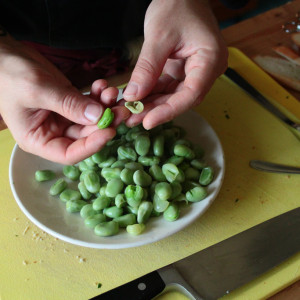
|
Once boiled, peel the beans one by one
|
|
View the step by step
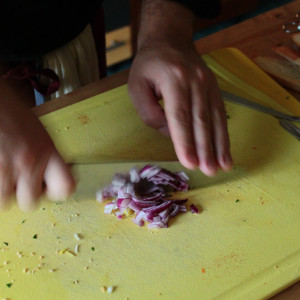
|
Prepare some chopped onions pan in which you will cook the beans
|
|
View the step by step
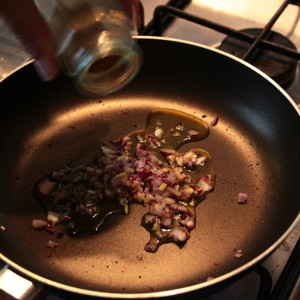
|
Fry the chopped onions in a frying pan with a dash of olive oil
|
|
View the step by step
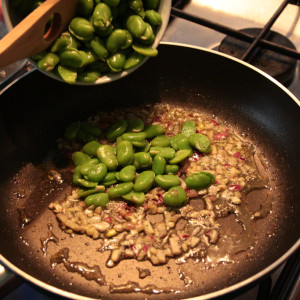
|
Cook the beans in the frying pan with the onions for 5 minutes …
|
|
View the step by step
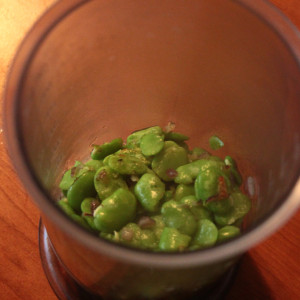
|
… then put the mixture in a suitable receptacle for blending with an electric hand mixer
|
|
View the step by step
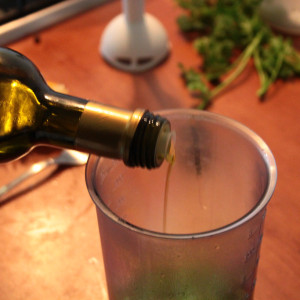
|
Add plenty of extra virgin olive oil
|
|
View the step by step
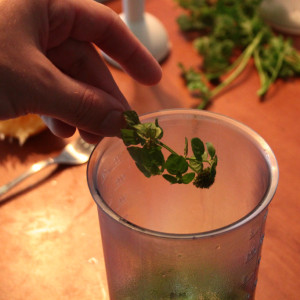
|
Add a sprig of fresh mint
|
|
View the step by step

|
.. and blend until you obtain a purée
|
|
View the step by step
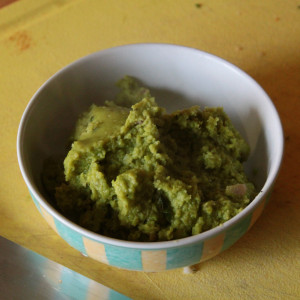
|
If it's too thick, dilute the purée with a little water and warm it for five minutes in a pan, where you should also add salt to taste
|
|
View the step by step
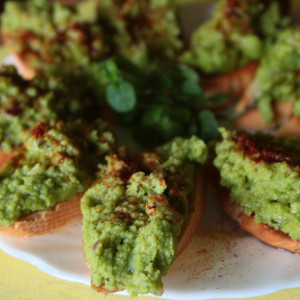
|
Cut the baguette into diagonal slices and toast them, then spread them with a spoonful of broad bean purée and sprinkle with a little paprika.
|




